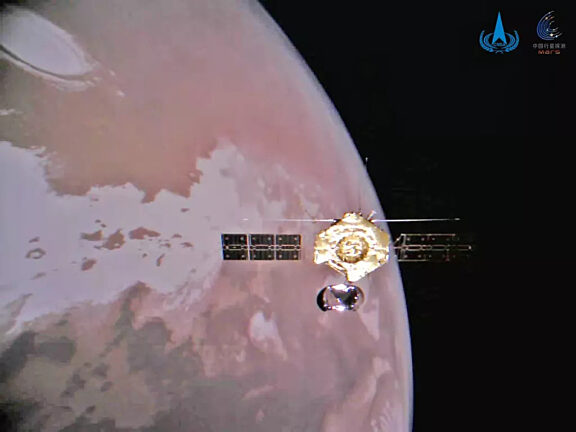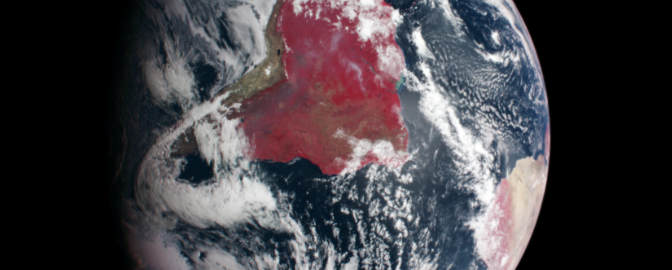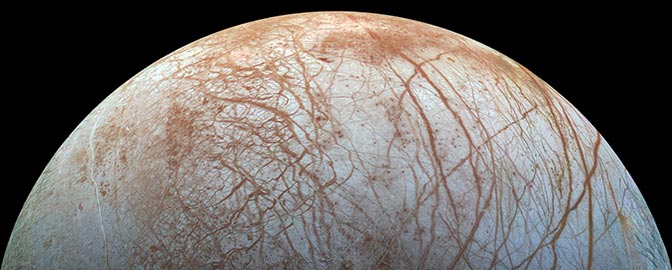China eyes Saturn’s icy moon Enceladus in the hunt for habitability
When the Cassini spacecraft zoomed past Enceladus on its tour of the Saturn system, a curious signal in the data hinted at a possible atmosphere. Upon further investigation, Cassini found that instead of an atmosphere, this signal came from plumes of water ice particles erupting from Enceladus’s south pole — an unexpected and transformative discovery.
The mysterious global ocean now thought to be hiding below the moon’s striking tiger-striped surface has made Enceladus one of the most alluring and intriguing spots in the Solar System, especially when considering potential habitability or even the presence of life. Not only is there liquid water, but maybe also the chemical ingredients needed for Earthlike life.
Enceladus is a particularly enticing target because its ice shell is relatively thin and accessible, particularly at the south pole, compared to other compelling moons such as Europa. And with NASA’s Europa Clipper mission already en route to the Jupiter system, Enceladus is considered by many scientists to be the next logical target in the exploration of icy moons.
Now, scientists from China, a country whose deep space exploration ambitions and capabilities have grown rapidly over the last decade, are proposing sending a spacecraft to study Enceladus and peel back the layers of mystery below its icy crust.

Three-part mission architecture
To do this, a team from China’s Deep Space Exploration Laboratory (DSEL) — a new national research institute dedicated to supporting and advancing the country's ambitions in deep space science and exploration — and the Shanghai Institute of Satellite Engineering (SISE) propose an orbiter and lander mission to explore Enceladus with a key focus on the moon’s potential habitability.
The mission proposal outlines a three-part spacecraft architecture, consisting of an orbiter, a lander, and a deep-drilling robot. The orbiter would conduct global remote sensing of Enceladus using instruments like a laser interferometer and infrared spectrometer to map the ice shell, assess its magnetic field, and select landing sites, while the lander would then take in-situ measurements to validate remote sensing. Finally, the drilling robot would probe up to 5 kilometers (about 3 miles) below the ice shell to directly sample the moon’s enticing ocean at the ice-ocean boundary and seek out potential biosignatures.
At first glance, this may seem overly ambitious or perhaps a consideration for the far future, with China yet to make its first foray into the outer Solar System. It is also an early mission outline rather than a proposal ready for review and approval. It does, however, indicate that icy moons are now in the sights of China’s scientists and the country’s burgeoning space ambitions. Moreover, the mission plans to build logically and systematically on capabilities already developed or in development for China’s ongoing planetary exploration program, while also lining up with an emerging interest in habitability within China’s planetary science community.
China’s planetary progress
A quick look at China’s progress so far already shows strong engineering capabilities, as well as the construction of key infrastructure such as a deep space network. The country’s first successful dedicated planetary mission, the Tianwen-1 Mars orbiter and lander mission that launched in 2020, demonstrated China’s ability to conduct a mission up to hundreds of millions of kilometers away, with requisite deep space communication. This also made China only the second country, behind the United States, to land safely and operate a rover on the red planet.

Tianwen-2 launched in late May this year to conduct an asteroid sample return mission and then head to a main-belt comet. Further confirmed missions include Tianwen-3, the world’s first Mars sample return attempt, which is scheduled to launch in late 2028 and has a focus on signs of life, as well as Tianwen-4, launching around 2029 for Jupiter and its moon Callisto. These missions will further build capabilities needed to operate even farther from Earth, setting the stage for missions farther into the outer Solar System. This includes a potential Neptune orbiter mission with a keen interest in Triton’s subsurface ocean and the proposed voyage to Enceladus.
A series of other proposed missions further emphasizes habitability. Last year, China released a long-term road map for space science and exploration that includes a mission to collect samples of the Venusian atmosphere and return them to Earth, scheduled for the 2030s. Meanwhile, the country is developing an exoplanet-hunting observatory to hunt for “Earth 2.0,” which could launch as soon as 2028.
Enceladus challenges and solutions
Executing a mission to the Saturn system would present new challenges and technological hurdles for China. These include developing advanced payload systems, designing complex trajectories, addressing power supply limitations, and, given the distances and light-time delay involved, achieving highly autonomous operation.
While Enceladus’ south pole offers relatively easier access to the moon’s subsurface ocean than other parts of the moon, the challenges of kilometer-scale ice and extreme cold of around -180 degrees Celsius (-290 degrees Fahrenheit) remain. For this, they propose a hybrid laser and thermal drilling system, with the former used to avoid any ice rapidly evaporating and damaging the spacecraft, and the latter harnessing waste heat from a compact nuclear fission reactor to melt the ice. This approach avoids the mechanical wear and tear of traditional drilling and the need to deal with debris.
During the drilling process, the probe would conduct continuous in-situ sensing of the physical and chemical environment with an eye on biogenic potential and resource availability. It would look for signs of carbon, hydrogen, oxygen, nitrogen, phosphorus, and sulfur — the six chemical elements that form most of the essential building blocks of life as we know it — using mass spectrometry and spectroscopy. Teasing out any signs of life in this data, if present, would be a difficult task that the mission would have to carefully design for later on in development.
The team proposes using small modular nuclear reactors or radioisotope thermoelectric generators to power the mission, as Saturn is too distant for a spacecraft to rely effectively on solar power. The spacecraft would also need energy-efficient transfer trajectories for the journey to Saturn, stable orbital designs, and precisely executed trajectories to achieve science objectives such as flying through Enceladus’ plumes. While we might take this for granted, having seen Cassini and Juno make complex tours of Jupiter and Saturn, these deep-space maneuvers at great distances would be somewhat new for China, though it has already demonstrated serious expertise in this arena.
To navigate deep under the ice, the drilling robot would use inertial navigation systems such as accelerometers and gyroscopes, simultaneous localization and mapping systems such as cameras and LIDAR, or acoustic positioning using lander-based pings. The Enceladus Explorer (EnEx) mission concept developed by the German Aerospace Center (DLR) proposed similar navigation systems for its own tethered melting probe to travel through the thick ice.

An icy moon stepping stone
Addressing the challenges of an Enceladus mission would require considerable resources but would strengthen China’s future planetary exploration capabilities and provide foundational technology needed to search for habitable environments within the Solar System.
Such a mission could advance our understanding of the habitability of icy worlds, planetary formation, the potential for extraterrestrial life in the Solar System, and the very origin of life itself, while also significantly enhancing China’s technological capabilities in deep space missions and its leadership in planetary science.
China is already committed to a sample return mission from Mars, a first Jupiter mission, and potentially a nuclear-powered mission to Neptune. A voyage to Saturn and its fascinating, icy moon Enceladus could be the next natural step in its exploration journey.
Support our core enterprises
Your gift today will go far to help us close out the year strong and keep up our momentum in 2026.
Donate

 Explore Worlds
Explore Worlds Find Life
Find Life Defend Earth
Defend Earth



